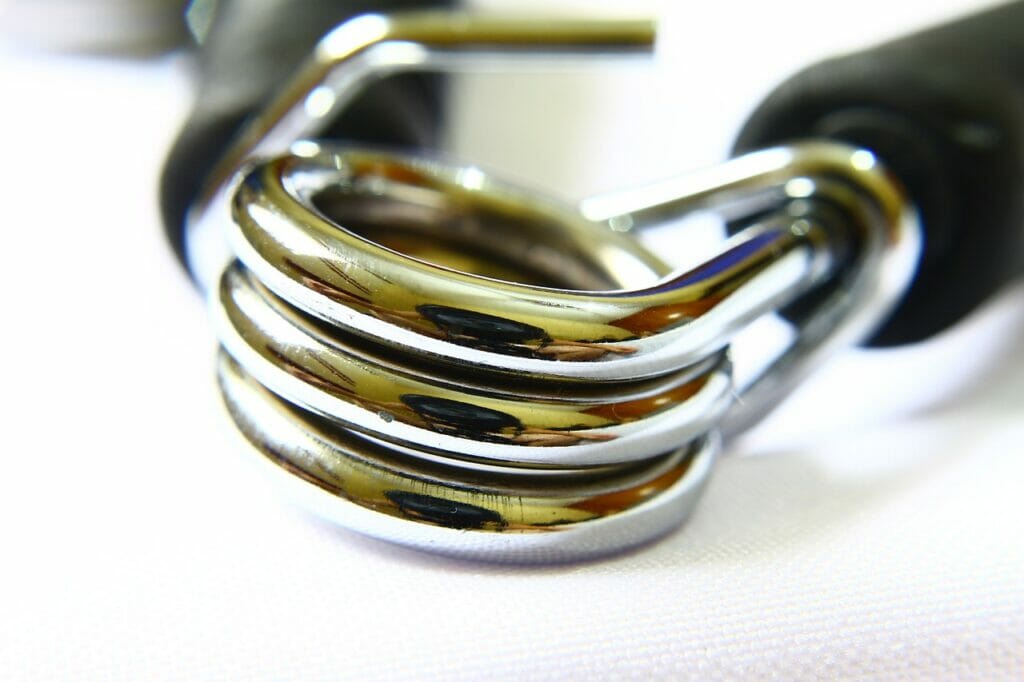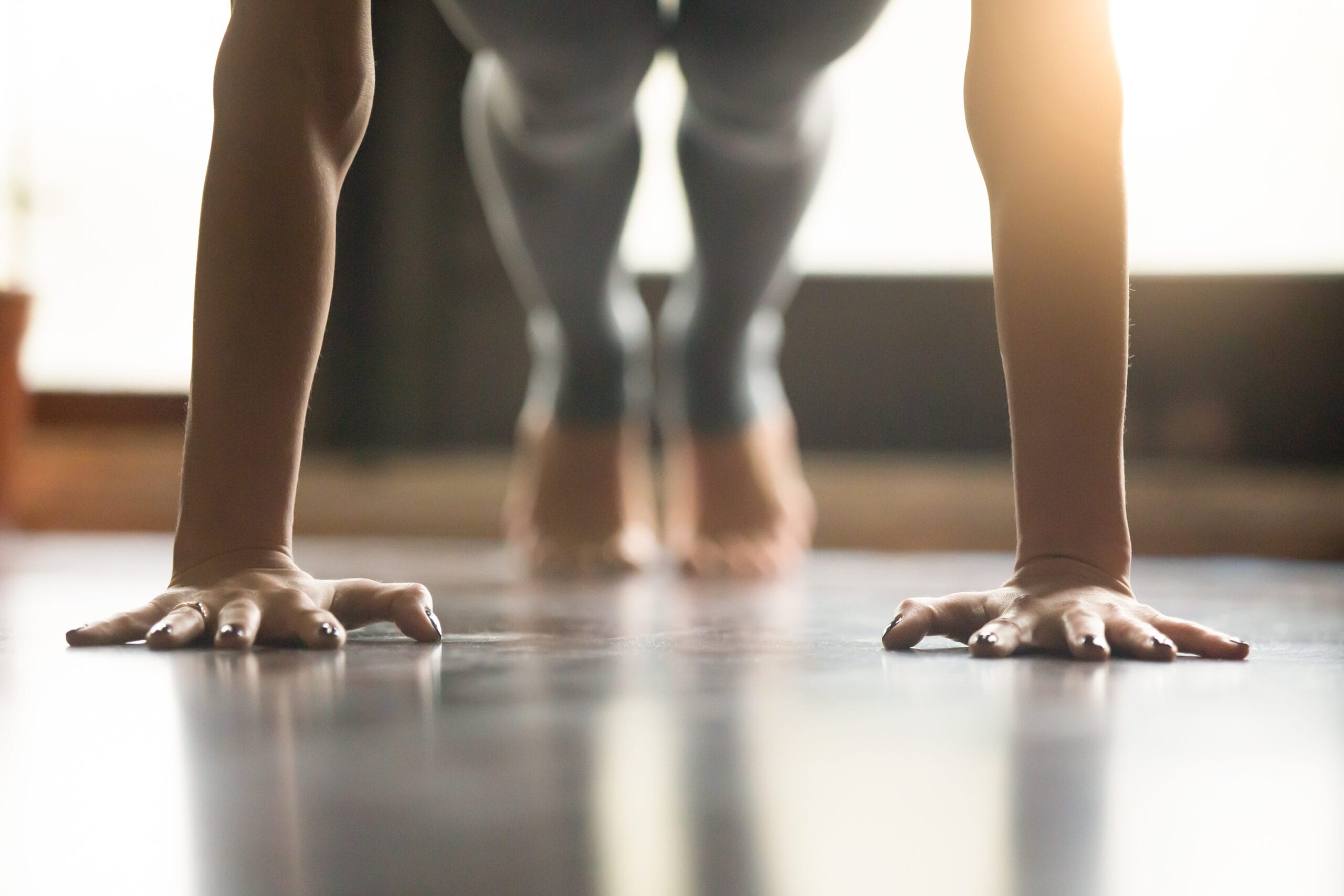
A lot of us have likely been taught the importance of a firm handshake, but there are other benefits of having ample grip strength as well.
Having a stronger grip comes in handy when it comes to opening jars and tearing things, but it’s also an important part of carrying stuff too.
And a strong grip certainly helps in the gym, where a weak grasp can make all the difference between making progress or hitting a plateau.
And as a physical therapist (and someone who suffers from chronic issues with both medial and lateral epicondylitis), I know firsthand that improving grip strength can help manage painful elbow and forearm conditions and help prevent them from coming back.
In other words, grip strength is a really important component of fitness that a lot of us might ignore.
Well, that stops today!
In this guide, I’ll be going over some great exercises to help improve your grip strength, but I’ll also dive a little deeper into why grip strength is so important when it comes to elbow health.
And don’t worry, you don’t have to sit around squeezing one of those little grippers all day to get stronger.
Alright, let’s start from the top.
A Little Bit of Anatomy
As a therapist, I’m a strong proponent that it’s important to understand what’s going on with our bodies.
With my patients, this means educating them on whatever particular ailment I may be treating them for, but I think it’s equally important for healthy individuals exercising on their own.
Understanding a little basic anatomy can help you pick exercises to target specific muscle groups and help you understand why certain exercises are performed the way they are.
You can get as technical as you like and start memorizing muscle names, but that’s not necessary, as long as you understand the basic functions of different muscle groups.
Anyway, our hands are pretty complex – there’s a lot going on in there.
Not only are there a ton of bones in each hand, but when you consider all the ligaments, tendons, tendon sheaths, nerves, and blood vessels coursing through each one, I think it’ fair to say hands are pretty complicated.
And all of this stuff is crammed into a relatively small space…
My point is, there are several different components working together to create our functional grip.
In terms of muscles though, it mostly boils down to our finger/wrist flexors and our finger/wrist extensors, although we have a few intrinsic hand muscles that contribute to grip strength as well.
It’s not really important to know the different names of these muscles (and even with years of experience, I’d by lying if I told you I could recall all these muscle names off the top of my head), but I think it’s helpful to know where they are and what they do.
Speaking of anatomy, I always loved anatomy in school and did well with it, but I did always have trouble remembering the forearm muscles… it’s just a lot of ’em and they all kinda sound the same.
Anyway, our finger/wrist flexors work to bend our fingers and wrist and these muscles are located on the inside of our forearms, with many starting all the way up close to our elbows.
The tendons of these muscles extend through the wrist and attach to varying bones in our hands, depending on the specific muscle.
The extensor muscles do the opposite – they’re located on the outside of our forearms with their tendons running across and attaching to the opposite side.
So when the extensor muscles contract, they work to extend, or straighten, your wrist and fingers.
So, we basically have 2 large groups of forearm muscles working in tandem to bend and extend our hands, but when it comes to grip, they have to work together.
I know, we tend to think of only our flexors having to work when it comes to grip, but our wrist extensors get involved too.
This is mainly because our wrist has to be in some degree of extension in order to achieve a strong grip.
Don’t believe me, try it.
Keep your wrist in a completely neutral position (or even bend into flexion) and try to give a good squeeze – it’s hard to do.
Our wrist naturally wants to extend a few degrees as we start gripping hard, thus getting the wrist extensors involved.
I feel like I’m starting to ramble on here, so I’ll get to it – the key takeaway here, is that most of the important muscles involved with grip are located in our forearms, so these are the muscles we need to work in order to improve grip strength.
A Weak Grip Can Lead To Problems
If you’re reading this, you might be well aware of the risks a weak grip can bring, but I want go over a few considerations just in case.
We all may have our own reasons for improving our grip strengths, but if you’re actively looking at it, it probably means you’ve noticed a deficit somewhere in your daily routine.
This could be when trying to open a jar or container and you couldn’t quite get the lid off (how annoying is it to have to ask somebody else to do it for ya?!?)
It could also be in the gym.
Weak grippers become obvious when doing exercise involving holding heavier weights (think deadlift) or when having to hang from a bar (dead hang or hanging knee raises).
And in some cases, a weak grip can even be what holds you back from making gains.
For example, if your forearms are giving out on ya on deadlift, it doesn’t matter how strong the rest of you is – if you can’t hold the bar, you can’t lift it.
The above examples are frustrating enough, but I’m of the opinion that a weak grip can also make you more prone to develop elbow issues like tennis elbow (lateral epicondylitis) and golfer’s elbow (medial epicondylitis).
Both conditions are typically caused by overuse issues, with the areas where these muscle groups attach to the elbow becoming irritated and painful.
I don’t play golf or tennis, but I’ve had issues with both conditions (usually lateral epicondylitis though) intermittently for years and I can tell ya – they can be quite disabling.
The pain from either condition can be intense and when it occurs anytime you grab something, hold something, or bend you elbow, it makes it hard to do a lot of things.
Well, I don’t have any direct evidence to cite here, but anecdotally, I can tell you that improving grip strength can help manage/prevent these elbow conditions.
Which makes sense if you think about it.
Both conditions come from overuse issues, where the muscles get too tight and put too much stress on the tendon attachment with the elbow.
Keeping the forearm flexors and extensors stretched and loose can help a lot (the Rolflex has helped me a lot with this), but it also makes sense that the stronger these muscles are, the better able they’ll be to tolerate the stresses they’re being put through.
This is where improving your grip strength comes in.
And even if working on grip strength doesn’t prevent these elbow conditions, I know it certainly helps treat ’em.
Exercises To Help Improve Grip Strength
The only way to strengthen your grip is to practice gripping things.
This means we have to spend time actively squeezing stuff (and squeezing hard) – and I don’t know about you, but I find sitting around squeezing stuff to be really boring.
So personally, I like to include grip strengthening with other functional exercises when possible.
Not only does this help reduce boredom, but it makes me feel like I’m accomplishing a little more.
That said, the old school grip strengtheners can be helpful, especially if you don’t have access to stuff like dumbbells, barbells, or pull up bars.
If you’re trying to get a stronger grip, try out the following exercises:
#1 Pull Up Bar Squeeze
Sorry, I couldn’t find a video of this one, but I saw it mentioned as a grip exercise a long time ago and it really stuck with me.
This is an exercise I started using and I noticed a significant improvement after about a week or so (which reminds me, I need to get back on it).
This exercise is a bit different than the dead hang (mentioned below) because you need to have a foot on the ground (or a chair) while doing it.
The goal is to only be holding ~80% of your body weight while hanging, so you can really focus on squeezing the hell out of the bar.
Having a foot supporting part of your bodyweight makes it a little easier than a pure dead hang, so you can spend more time with each rep squeezing.
The goal is to squeeze for a total of 2 minutes, but don’t worry if you can’t do that all in one rep (I know I can’t) – just stop your watch any time you take a break.
But try to keep those rest breaks to 15 seconds or less.
#2 Dead Hang
This exercise is a lot harder than it sounds and it’ll really test your grip strength.
For this, you’ll need a pull up bar – simply grab the bar with an overhand grip, hands a comfortable distance apart, and hang, holding your entire bodyweight.
No pull ups here, just hanging.
And time yourself.
I hate this exercise, but it can really help strengthen your grip.
Shooting for 1 minute is a great goal, but start off with your own goals, depending on where you’re at.
I like to use 3 sets, but see what works for you.
You can add a little extra something something to it by trying to hold your shoulders in a retracted position (squeezed down and together) while hanging.
#3 Pull Ups
If you can do pull ups, they can be a great way to increase grip strength – if you can’t do ’em pain free though, I’d skip this for now or use a band to do assisted pull ups.
When working on grip strength, I find the overhand grip or neutral grip most helpful, but the key again, is to squeeze the heck out of that bar while doing your pull ups.
As always, try to initiate the movement with your lats and not your arms.
And if you don’t have a pull up bar, you could always do horizontal pull ups as well.
#4 Deadlift
Few strength training exercises are harder on your grip than the deadlift, so what better way to train our grips?
It’s important to have a solid deadlifting technique before you start focusing on your grip during the move, but if you’re comfortable with your technique, you should be good to go.
During the move, try squeezing the bar as hard as you can throughout and then holding the barbell for a few extra seconds in the standing position – this isometrically hits your grippers.
You’ll likely want to start a little lighter on the weight, so you can focus on holding the squeeze longer.
I’d also avoid the staggered grip too – use an overhand grip with both hands to make it harder to hold the bar.
#5 Farmer’s Walk
This is another great grip strength building exercise that I think a lot of us tend to forget about.
It’s actually a great exercise for building core strength and cardiovascular conditioning as well.
With this one, you’re just grabbing a pair of dumbbells and walking a set distance – nothing too complicated going on here.
But since we’re working on grip strength, focus on squeezing the dumbbells as hard as you can while walking.
In terms of reps/sets, you can go for time (30 sec reps) or distance (50 ft), depending on your home setup.
Just make sure to keep everything under control – don’t try to walk too fast to get it over with.
#6 Towel Grip
I including a few different exercises all under this umbrella term, but using a towel is another creative way to help improve your grip.
If you’re gifted enough, you can do pull ups with a towel in one hand -do a few reps and then switch the towel to the other hand (this was used in the old P90X workouts and it’s a good one).
But you could also wrap towels around a barbell for isometric holds or even do a towel version of the farmer’s carry mentioned above.
You could always just grab a towel, bunch it up, and just squeeze isometrically as hard as you can for 10 seconds at a time.
#7 Grippers
Finally, I did want to include the classic grippers because they do work.
They’re tedious, but they can certainly improve grip strength.
They come in a lot of different sizes and resistances, so try to find one that fits your hand comfortably and provides the right amount of resistance to make it challenging, yet doable.
Many now come with adjustable resistances, giving you the ability to increase the resistance as you get stronger.
I like to include an isometric hold with each rep, but you don’t have to.
Final Thoughts
Ok, there ya have it, several exercises to help build up that grip strength.
When implementing these exercises into your workouts, you could pick a couple and spread out over the week or mix and match daily depending on how you’re feeling.
The frequency likely depends on what exercise you’re doing though – I don’t know about you, but I’m not going to do deadlifts or farmer’s carries every day.
But bodyweight exercises like dead hangs or the pull up bar squeezes mentioned at the top could easily be done daily without overworking other muscles.
Personally, of the bunch, I find the pull up bar squeezes and the dead hangs to be very effective.
And again, if you’re prone to forearm/elbow pain, I encourage you to start implementing some of these exercises – just make sure they’re pain free.
I hope you found this guide helpful – if you have any questions or comments (or know of some other grip strengthening exercises that deserve a shout out), please leave ’em below and I’ll get back to you shortly.


